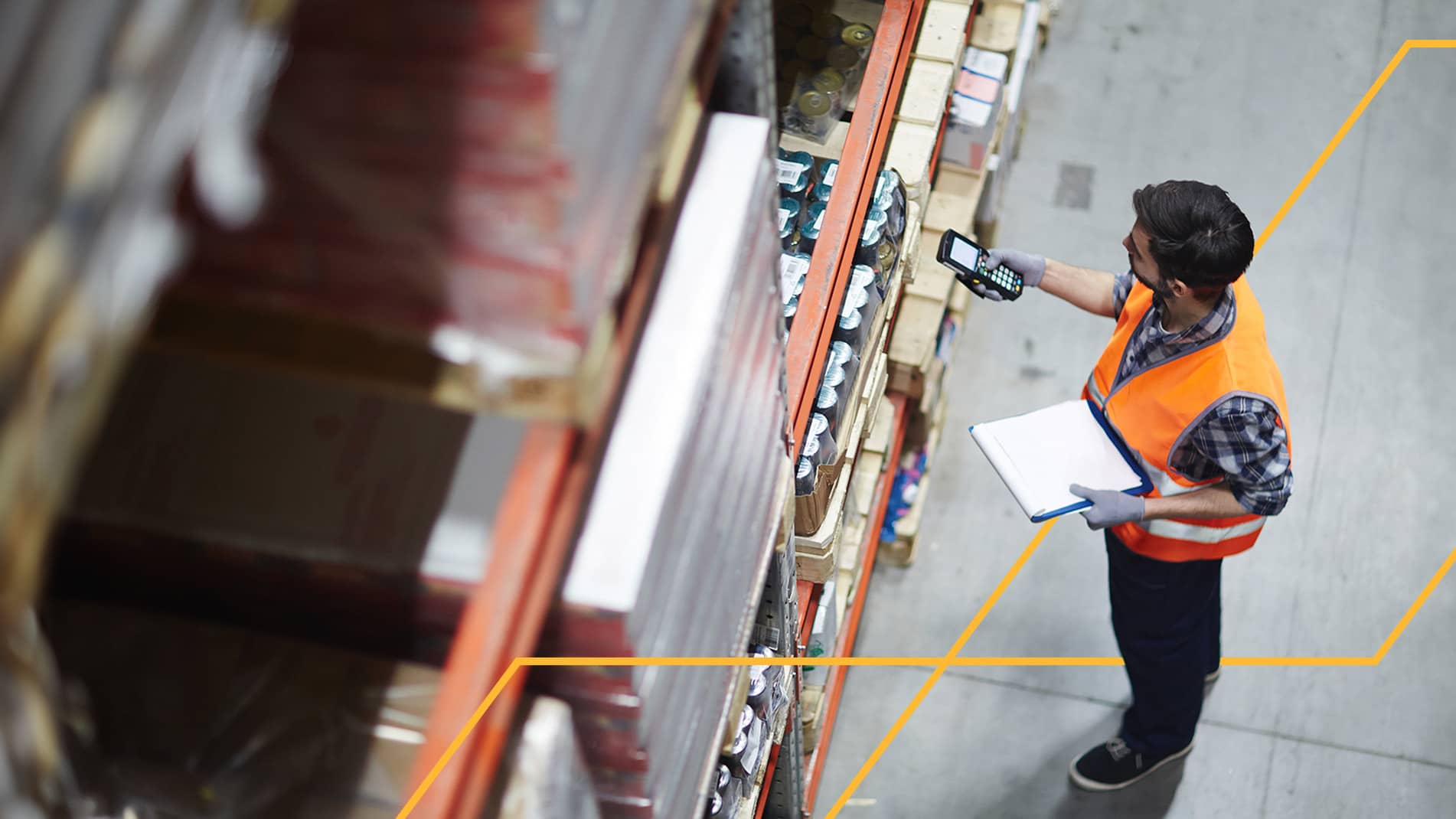The Future of Warehouse Robotics & Automation
- September 19, 2025
- Manhattan Staff
- 3 minutes

Key Takeaways
- Flexibility and Modularity Are Essential: The warehouse automation industry is moving away from rigid, fixed systems toward flexible and modular solutions to quickly adapt to changing market demands.
- Decision-Making Is Challenged by Market Complexity: Clear frameworks and real-world testing are crucial for making effective technology choices and avoiding delays in automation projects.
- Intelligent Software and Interoperability Are Key to Future Success: The industry trend is fast leaning towards more open, standards-based architectures to enable businesses to integrate best-of-breed solutions and avoid vendor lock-in.
The logistics and supply chain industry has undergone a seismic shift over the last few years. From the e-commerce boom during the pandemic to changing consumer preferences, labor shortage and rising costs, distribution centers (DCs) and warehouses have had to rethink how they approach automation. In a recent discussion between Adam Kline, Senior Director of Product Management at Manhattan, and Rueben Scriven, Research Manager at Interact Analysis, at Momentum 2025 in Las Vegas, several critical trends emerged that are shaping the future of warehouse robotics and automation.
From Fixed to Flexible - The Rising Need for Automation
During the pandemic, e-commerce demand drove a frenzy for new warehouse construction. These facilities were massive, often a million square feet or more and typically equipped with fixed automation systems. Fixed systems offered speed and high output but required a long-term confidence in demand forecasts and offered little in the way of future flexibility.
As the market cooled in 2022, companies shifted strategies. Instead of building new facilities, they looked inward, seeking ways to improve efficiency within existing warehouses. This transition sparked a surge in demand for flexible, mobile automation solutions. Autonomous mobile robots (AMRs) and modular systems became the preferred choice, offering scalability and adaptability in an unpredictable business environment.
The lesson was clear: the volatility of global supply chains has made flexibility almost as valuable as throughput. Companies no longer want to be locked into rigid systems - they want automation that evolves with their needs.
Too Much Choice, Not Enough Clarity
While the rise of robotics has opened exciting possibilities, it has also created a new set of challenges. The sheer number of solutions in the market can overwhelm decision-makers. With dozens of companies offering variations on similar technologies, many companies fall into a cycle of “analysis paralysis.”
Rueben pointed out that organizations should compare technologies in real-world contexts. Without clear frameworks for decision-making, businesses risk delaying automation projects, waiting for “the next big thing” instead of deploying solutions available today.
Growth Beyond E-commerce
Although e-commerce fulfillment remains a major driver of automation, other sectors are emerging as hotspots for innovation, too. Grocery distribution, for instance, requires large-scale automation to manage inbound pallets, deconstruct cases, store them efficiently, and then rebuild multi-SKU pallets ready for store delivery. This is especially complicated given the involvement of perishable goods that need to move fast.
In Europe, companies like Witron have long dominated this space with highly automated pallet-handling systems. In the U.S., newcomers like Symbotic are shaking up what was once a single-player market. Walmart’s adoption of Symbotic systems highlights how competition is fueling innovation in grocery automation, bringing more choice to an industry that historically had limited options.
Brownfield vs. Greenfield: The Retrofit Challenge
One of the biggest considerations in automation today is whether companies are building new (greenfield) facilities or retrofitting existing ones (brownfield). Greenfield projects allow for custom, large-scale automation, but many businesses are now prioritizing brownfield retrofits to work with existing infrastructure.
Scriven warns that retrofitting is rarely easy. It often comes with delays and headaches. However, vendors are now responding with modular, plug-and-play systems designed to fit existing spaces. AutoStore is a prime example, with cube-based storage systems that can wrap around columns and adapt to oddly shaped layouts. The emphasis is fast shifting from bespoke systems to modular solutions that can flexibly integrate into diverse warehouse environments.
The Role of Warehouse Execution Systems (WES)
It is important to note that automation doesn’t operate in isolation. To orchestrate robots, humans, and workflows, companies need sophisticated software. This is where Warehouse Execution Systems (WES) come in.
According to Scriven, warehouse software generally has four layers:
- Subordinate control - low-level movement like PLCs and AMR navigation.
- Control - routing and movement logic.
- Execution - optimizing outputs under constraints.
- Management - handling orders, inventory, and external flow.
A true WES must dynamically release orders, span the entire warehouse, and balance resources between humans and machines. However, different vendors approach WES differently. Some embed it directly into Warehouse Management Systems (WMS), while others pair it tightly with their own automation (CWES - control WES). Standalone WES vendors also exist, offering bolt-on solutions that seek to optimize existing WMS platforms. Each approach has its own advantages: embedded systems excel at inventory visibility, while CWES benefits from tight integration with automation.
Looking Ahead: Interoperability and Openness
Questions remain about the interoperability of different systems. Can a Warehouse Execution System (WES) from one automation provider truly coordinate technologies from multiple vendors? While many claim to offer open integration, the reality is usually more complex. Standards are improving, but integration tends to be more seamless when solutions come from the same ecosystem. Another concern: can a third-party WES effectively prioritize and schedule picking and replenishment activities to guarantee product availability at the moment of pick, without serving as the inventory system of record? Achieving accurate, real-time inventory visibility remains one of the most difficult challenges to solve.
That said, the pressure from customers for flexibility is pushing vendors toward more open architectures. The goal is to avoid vendor lock-in and allow businesses to mix and match solutions as their needs evolve.
Conclusion
The future of warehouse automation will be defined not just by advanced robotics, but by flexibility, modularity, and intelligent software. With numerous options available in the market, businesses face a landscape of both overwhelming choice and unprecedented opportunity. However, winners will be those who adopt scalable, interoperable solutions while keeping an eye on both short-term efficiency and long-term adaptability.
Ultimately, automation is no longer about building the biggest, most advanced warehouse. It is about building the smartest, most flexible one.
To view the entire discussion, please click here.
Everything Works Better With Manhattan Solutions
Manhattan offers a complete breadth of solutions that when unified, provides total coverage for your supply chain commerce needs.

Warehouse Management
Control demand, supply, labor, and automation across your entire network with Manhattan Active® Warehouse Management.

Transportation Management
Manage every carrier, rate, route, and load with Manhattan Active® Transportation Management.

Order Management
Manhattan Active® Order Management provides stores with visibility into available inventory held anywhere, supporting endless aisle selling.





